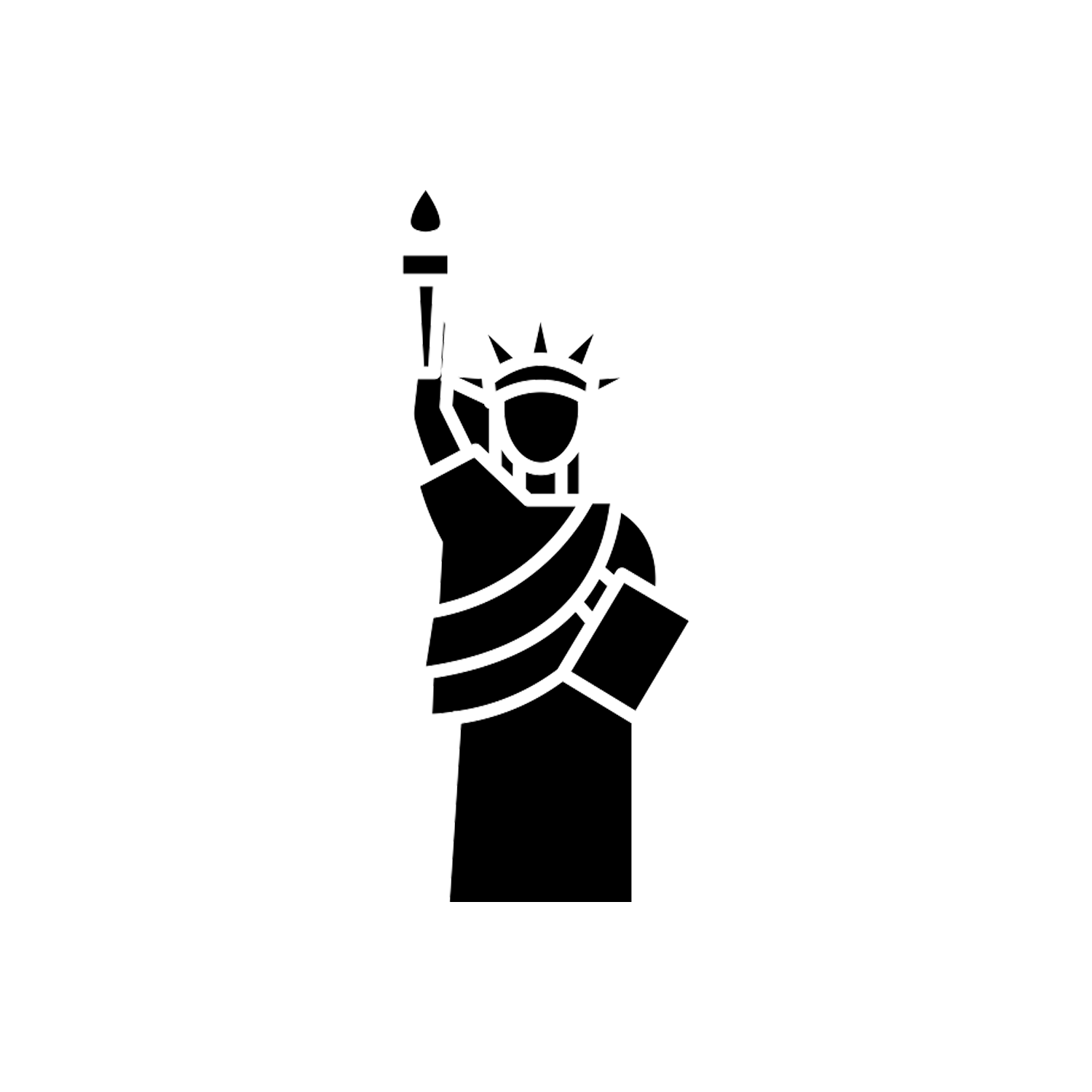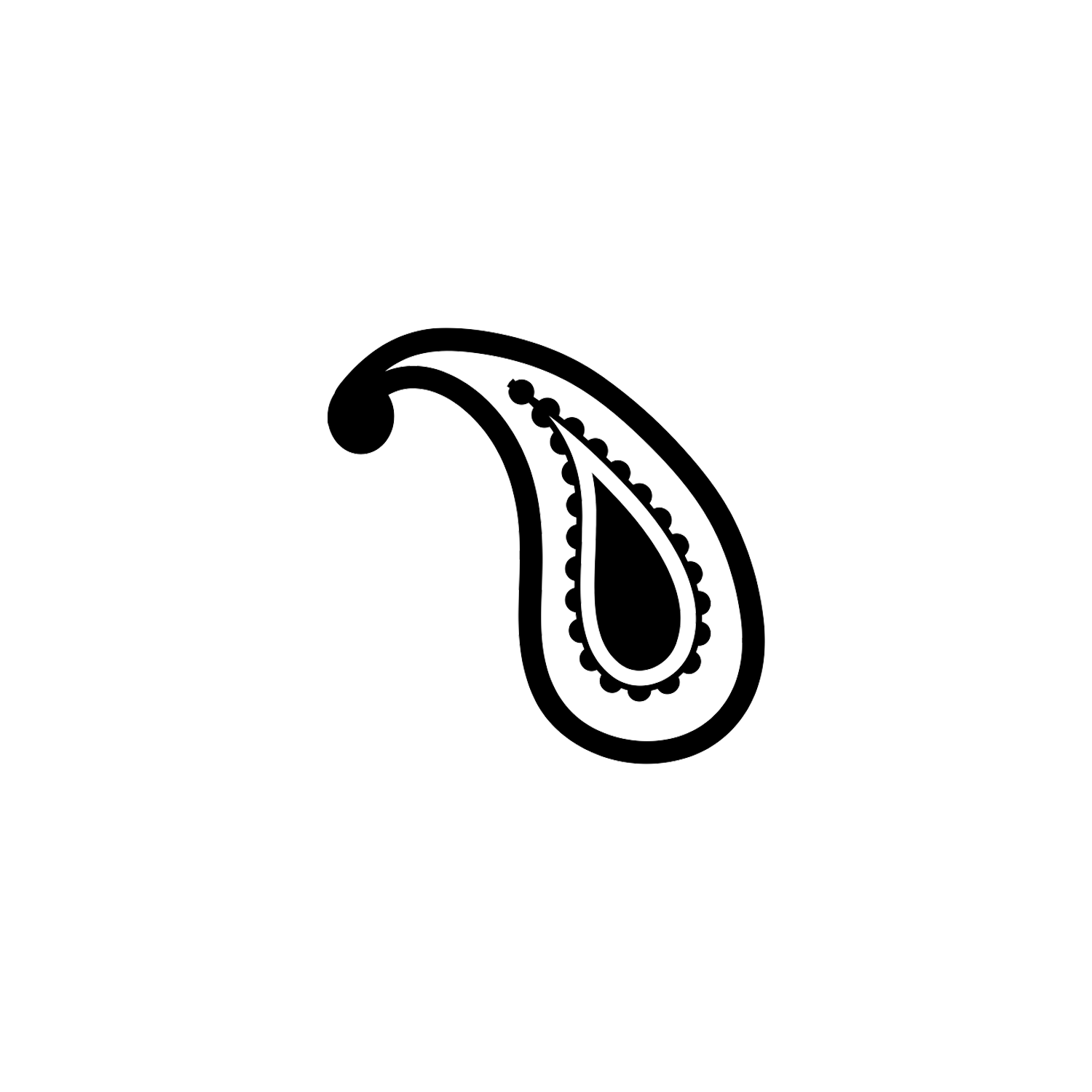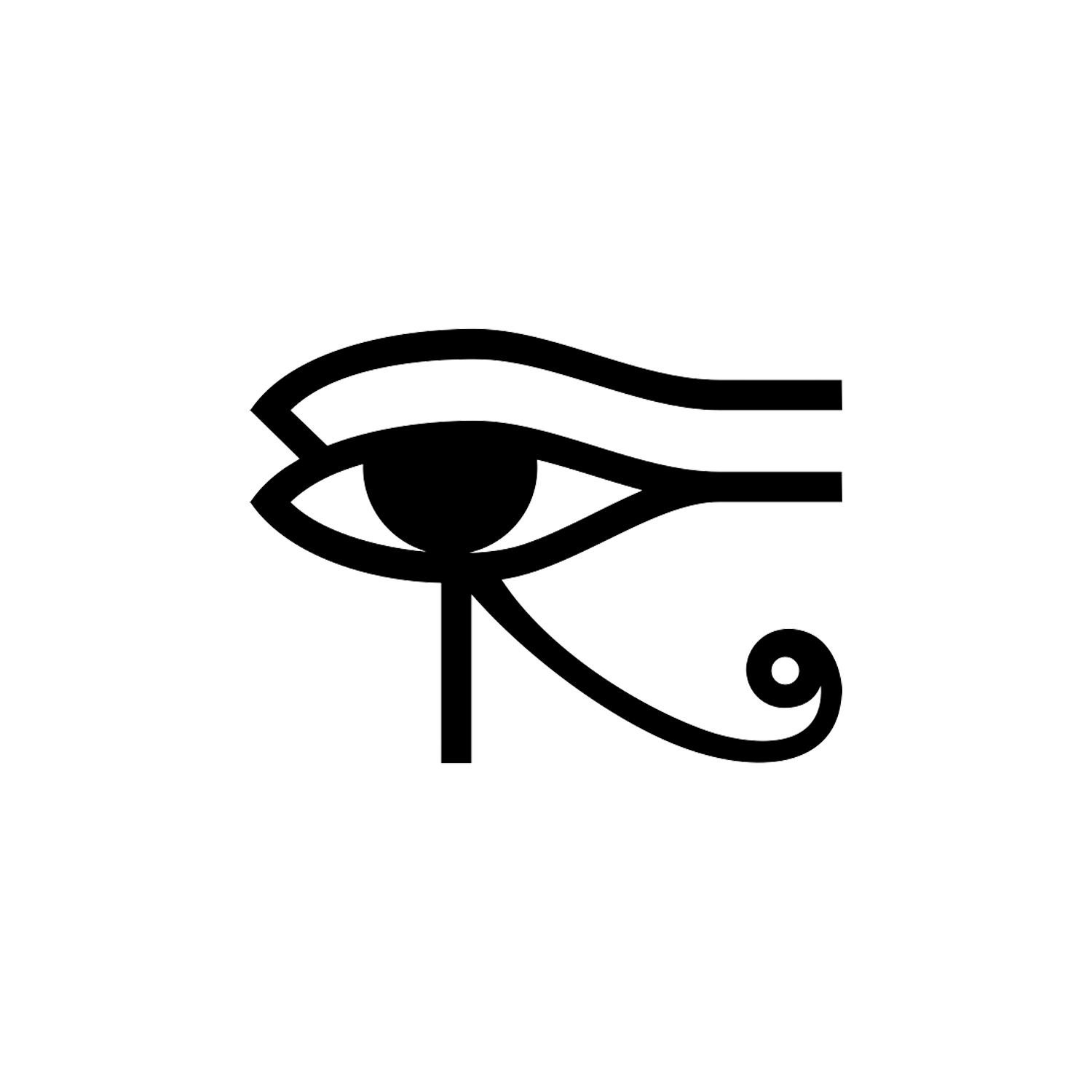Statue of Liberty


Statue of Liberty
Also known as Lady Liberty.
Overview
The Statue of Liberty is a colossal neoclassical sculpture on Liberty Island in New York Harbor in New York City, United States. The copper statue, a gift from the people of France, was designed by French sculptor Frédéric Auguste Bartholdi and its metal framework was built by Gustave Eiffel.
The official name for it is actually longer—The Statue of Liberty Enlightening the World.
Origin and Meaning
The statue is a figure of Libertas, the Roman goddess of liberty. She holds a torch above her head with her right hand, and in her left hand carries a tabula ansata inscribed JULY IV MDCCLXXVI (July 4, 1776, in Roman numerals), the date of the U.S. Declaration of Independence. A broken chain and shackle lie at her feet as she walks forward, commemorating the national abolition of slavery following the American Civil War.[1] After its dedication the statue became an icon of freedom and of the United States, being subsequently seen as a symbol of welcome to immigrants arriving by sea.

The idea for the statue was born in 1865, when the French historian and abolitionist Édouard de Laboulaye proposed a monument to commemorate the upcoming centennial of U.S. independence (1876), the perseverance of American democracy and the liberation of the nation’s slaves.[2] The Franco-Prussian War delayed progress until 1875, when Laboulaye proposed that the people of France finance the statue and the United States provide the site and build the pedestal. Bartholdi completed the head and the torch-bearing arm before the statue was fully designed, and these pieces were exhibited for publicity at international expositions.
The torch-bearing arm was displayed at the Centennial Exposition in Philadelphia in 1876, and in Madison Square Park in Manhattan from 1876 to 1882. Fundraising proved difficult, especially for the Americans, and by 1885 work on the pedestal was threatened by lack of funds. Publisher Joseph Pulitzer, of the New York World, started a drive for donations to finish the project and attracted more than 120,000 contributors, most of whom gave less than a dollar (equivalent to $34 in 2023). The statue was built in France, shipped overseas in crates, and assembled on the completed pedestal on what was then called Bedloe’s Island. The statue’s completion was marked by New York’s first ticker-tape parade and a dedication ceremony presided over by President Grover Cleveland.

The statue was administered by the United States Lighthouse Board until 1901 and then by the Department of War; since 1933, it has been maintained by the National Park Service as part of the Statue of Liberty National Monument, and is a major tourist attraction. Limited numbers of visitors can access the rim of the pedestal and the interior of the statue’s crown from within; public access to the torch has been barred since 1916.
The height of the copper statue (to torch) is151 feet 1 inch (46 meters). From ground level to torch it is 305 feet 1 inch (93 meters).
It is designated as a UNESCO World Heritage Site under the number 307 since 1984.
According to the National Park Service, the idea of a monument presented by the French people to the United States was first proposed by Édouard René de Laboulaye, president of the French Anti-Slavery Society and a prominent and important political thinker of his time. The project is traced to a mid-1865 conversation between Laboulaye, a staunch abolitionist, and Frédéric Bartholdi, a sculptor. In after-dinner conversation at his home near Versailles, Laboulaye, an ardent supporter of the Union in the American Civil War, is supposed to have said: “If a monument should rise in the United States, as a memorial to their independence, I should think it only natural if it were built by united effort—a common work of both our nations.”[3] The National Park Service, in a 2000 report, however, deemed this a legend traced to an 1885 fundraising pamphlet, and that the statue was most likely conceived in 1870.[4]
In another essay on their website, the Park Service suggested that Laboulaye was minded to honor the Union victory and its consequences, “With the abolition of slavery and the Union’s victory in the Civil War in 1865, Laboulaye’s wishes of freedom and democracy were turning into a reality in the United States. In order to honor these achievements, Laboulaye proposed that a gift be built for the United States on behalf of France. Laboulaye hoped that by calling attention to the recent achievements of the United States, the French people would be inspired to call for their own democracy in the face of a repressive monarchy.”[5]
According to sculptor Frédéric Auguste Bartholdi, who later recounted the story, Laboulaye’s alleged comment was not intended as a proposal, but it inspired Bartholdi.[6] Given the repressive nature of the regime of Napoleon III, Bartholdi took no immediate action on the idea except to discuss it with Laboulaye.
Bartholdi was in any event busy with other possible projects; in the late 1860s, he approached Isma’il Pasha, Khedive of Egypt, with a plan to build Progress or Egypt Carrying the Light to Asia,[7] a huge lighthouse in the form of an ancient Egyptian female fellah or peasant, robed and holding a torch aloft, at the northern entrance to the Suez Canal in Port Said. Sketches and models were made of the proposed work, though it was never erected.
There was a classical precedent for the Suez proposal, the Colossus of Rhodes: an ancient bronze statue of the Greek god of the sun, Helios.

This statue is believed to have been over 100 feet (30 m) high, and it similarly stood at a harbor entrance and carried a light to guide ships.[14] Both the khedive and Ferdinand de Lesseps, developer of the Suez Canal, declined the proposed statue from Bartholdi, citing the high cost.[8] The Port Said Lighthouse was built instead, by François Coignet in 1869.
Any large project was further delayed by the Franco-Prussian War, in which Bartholdi served as a major of militia. In the war, Napoleon III was captured and deposed. Bartholdi’s home province of Alsace was lost to the Prussians, and a more liberal republic was installed in France.[10] As Bartholdi had been planning a trip to the United States, he and Laboulaye decided the time was right to discuss the idea with influential Americans.[9] In June 1871, Bartholdi crossed the Atlantic, with letters of introduction signed by Laboulaye.[10]

Arriving at New York Harbor, Bartholdi focused on Bedloe’s Island (now named Liberty Island) as a site for the statue, struck by the fact that vessels arriving in New York had to sail past it. He was delighted to learn that the island was owned by the United States government—it had been ceded by the New York State Legislature in 1800 for harbor defense. It was thus, as he put it in a letter to Laboulaye: “land common to all the states.”[11] As well as meeting many influential New Yorkers, Bartholdi visited President Ulysses S. Grant, who assured him that it would not be difficult to obtain the site for the statue.[12] Bartholdi crossed the United States twice by rail, and met many Americans who he thought would be sympathetic to the project.[13] But he remained concerned that popular opinion on both sides of the Atlantic was insufficiently supportive of the proposal, and he and Laboulaye decided to wait before mounting a public campaign.[14]
Bartholdi had made a first model of his concept in 1870.[15] The son of a friend of Bartholdi’s, artist John LaFarge, later maintained that Bartholdi made the first sketches for the statue during his visit to La Farge’s Rhode Island studio. Bartholdi continued to develop the concept following his return to France.[16] He also worked on a number of sculptures designed to bolster French patriotism after the defeat by the Prussians. One of these was the Lion of Belfort, a monumental sculpture carved in sandstone below the fortress of Belfort, which during the war had resisted a Prussian siege for over three months. The defiant lion, 73 feet (22 m) long and half that in height, displays an emotional quality characteristic of Romanticism, which Bartholdi would later bring to the Statue of Liberty.[17]

By 1875, France was enjoying improved political stability and a recovering postwar economy. Growing interest in the upcoming Centennial Exposition to be held in Philadelphia led Laboulaye to decide it was time to seek public support.[18]
The French would finance the statue; Americans would be expected to pay for the pedestal.[19]
The announcement provoked a generally favorable reaction in France, though many Frenchmen resented the United States for not coming to their aid during the war with Prussia.[20]
According to Cara Sutherland in her book on the statue for the Museum of the City of New York, 200,000 pounds (91,000 kg) was needed to build the statue, and the French copper industrialist Eugène Secrétan donated 128,000 pounds (58,000 kg) of copper.[21]
On his return to Paris in 1877, Bartholdi concentrated on completing the head, which was exhibited at the 1878 Paris World’s Fair. Fundraising continued, with models of the statue put on sale. Tickets to view the construction activity at the Gaget, Gauthier & Co. workshop were also offered.[22] The French government authorized a lottery; among the prizes were valuable silver plate and a terracotta model of the statue. By the end of 1879, about 250,000 francs had been raised.[23]
The head and arm had been built with assistance from Viollet-le-Duc, who fell ill in 1879. He soon died, leaving no indication of how he intended to transition from the copper skin to his proposed masonry pier.[24] The following year, Bartholdi was able to obtain the services of the innovative designer and builder Gustave Eiffel.[25]
Eiffel and his structural engineer, Maurice Koechlin, decided to abandon the pier and instead build an iron truss tower. Eiffel opted not to use a completely rigid structure, which would force stresses to accumulate in the skin and lead eventually to cracking. A secondary skeleton was attached to the center pylon, then, to enable the statue to move slightly in the winds of New York Harbor and as the metal expanded on hot summer days, he loosely connected the support structure to the skin using flat iron bars[26] which culminated in a mesh of metal straps, known as “saddles”, that were riveted to the skin, providing firm support. In a labor-intensive process, each saddle had to be crafted individually.[27][28] To prevent galvanic corrosion between the copper skin and the iron support structure, Eiffel insulated the skin with asbestos impregnated with shellac.[29]
Design and Dedication
Bartholdi and Laboulaye considered how best to express the idea of American liberty.[30] In early American history, two female figures were frequently used as cultural symbols of the nation.[31] One of these symbols, the personified Columbia, was seen as an embodiment of the United States in the manner that Britannia was identified with the United Kingdom, and Marianne came to represent France. Columbia had supplanted the traditional European Personification of the Americas as an “Indian princess”, which had come to be regarded as uncivilized and derogatory toward Americans.[32]
The other significant female icon in American culture was a representation of Liberty, derived from Libertas, the goddess of freedom widely worshipped in ancient Rome, especially among emancipated slaves. A Liberty figure adorned most American coins of the time,[33] and representations of Liberty appeared in popular and civic art, including Thomas Crawford’s Statue of Freedom (1863) atop the dome of the United States Capitol Building.[34]
The statue’s design evokes iconography evident in ancient history including the Egyptian goddess Isis, the ancient Greek deity of the same name, the Roman Columbia and the Christian iconography of the Virgin Mary.[35][36] Bartholdi’s early models were all similar in concept: a female figure in neoclassical style representing liberty, wearing a stola and pella (gown and cloak, common in depictions of Roman goddesses) and holding a torch aloft.
According to popular accounts, the face was modeled after that of Charlotte Beysser Bartholdi, the sculptor’s mother,[37] but Regis Huber, the curator of the Bartholdi Museum is on record as saying that this, as well as other similar speculations, have no basis in fact.[38]

A ceremony of dedication was held on the afternoon of October 28, 1886. President Grover Cleveland, the former New York governor, presided over the event.[39] On the morning of the dedication, a parade was held in New York City; estimates of the number of people who watched it ranged from several hundred thousand to a million.
President Cleveland headed the procession, then stood in the reviewing stand to see bands and marchers from across America. General Stone was the grand marshal of the parade. The route began at Madison Square, once the venue for the arm, and proceeded to the Battery at the southern tip of Manhattan by way of Fifth Avenue and Broadway, with a slight detour so the parade could pass in front of the World building on Park Row. As the parade passed the New York Stock Exchange, traders threw ticker tape from the windows, beginning the New York tradition of the ticker-tape parade.[40]
A nautical parade began at 12:45 p.m., and President Cleveland embarked on a yacht that took him across the harbor to Bedloe’s Island for the dedication.[41] Lesseps made the first speech, on behalf of the French committee, followed by the chairman of the New York committee, Senator William M. Evarts.

A French flag draped across the statue’s face was to be lowered to unveil the statue at the close of Evarts’s speech, but Bartholdi mistook a pause as the conclusion and let the flag fall prematurely. The ensuing cheers put an end to Evarts’s address.[42] President Cleveland spoke next, stating that the statue’s “stream of light shall pierce the darkness of ignorance and man’s oppression until Liberty enlightens the world”.[43] Bartholdi, observed near the dais, was called upon to speak, but he declined. Orator Chauncey M. Depew concluded the speechmaking with a lengthy address.[44]
Inscriptions and Plaques
There are several plaques and dedicatory tablets on or near the Statue of Liberty.
A plaque on the copper just under the figure in front declares that it is a colossal statue representing Liberty, designed by Bartholdi and built by the Paris firm of Gaget, Gauthier et Cie (Cie is the French abbreviation analogous to Co.).[45] A presentation tablet, also bearing Bartholdi’s name, declares the statue is a gift from the people of the Republic of France that honors “the Alliance of the two Nations in achieving the Independence of the United States of America and attests their abiding friendship.”[45]
A tablet placed by the American Committee commemorates the fundraising done to build the pedestal.[45]
The cornerstone bears a plaque placed by the Freemasons.[45]
In 1903, a bronze tablet that bears the text of Emma Lazarus’s sonnet, “The New Colossus” (1883), was presented by friends of the poet. Until the 1986 renovation, it was mounted inside the pedestal; later, it resided in the Statue of Liberty Museum, in the base.[45] “The New Colossus” tablet is accompanied by a tablet given by the Emma Lazarus Commemorative Committee in 1977, celebrating the poet’s life.[45]
A group of statues stands at the western end of the island, honoring those closely associated with the Statue of Liberty.
Two Americans—Pulitzer and Lazarus—and three Frenchmen—Bartholdi, Eiffel, and Laboulaye—are depicted. They are the work of Maryland sculptor Phillip Ratner.[46]

Freemasonry and Lady Liberty
The close ties between the Statue of Liberty and Freemasonry may come as a surprise to many due to the secretive nature of Freemasonry in America’s early history. Masons, at this time, took great pride in ensuring that their order stayed private and was not known to the outside world. Masons who were in the public eye, like George Washington and Ben Franklin, did not openly share their Masonic association.
In 1875, Bartholdi joined the Freemasons Lodge Alsace-Lorraine in Paris.[47][48] In 1876, Bartholdi was one of the French commissioners in 1876 to the Philadelphia Centennial Exposition. There he exhibited bronze statues of The Young Vine-Grower, Génie Funèbre, Peace and Genius in the Grasp of Misery, receiving a bronze medal for the latter.[49]
The statue’s other creator who first proposed the idea, Laboulaye, was also a Freemason, an academic, and a businessman descended from royal bureaucrats and international merchants. As his friend, he also belonged to the Lodge Alsace-Lorraine in Paris.
The structural framework was provided by fellow Freemason and French civil engineer Gustave Eiffel, who would later become famous for designing the Eiffel Tower. Copper was chosen as the material of choice by Bartholdi as it was among the least expensive material to construct with.
Named among the seven metals of alchemy, copper represents Venus, both the planet and the Roman goddess whose functions encompassed love, beauty, sex, fertility, prosperity and desire.
The Statue of Liberty Enlightening the World was largely built by Freemason laborers of the Franco-American Union and was completed in 1885.
On August 5, 1884, the cornerstone of the pedestal was laid with ceremony by William A. Brodie, Grand Master of Masons in the State of New York.


Ever since George Washington laid the cornerstone of the United States Capitol, it had been an American tradition to have a ceremony when laying the cornerstone of significant public and private buildings. Items were specially chosen and placed in a time capsule below the cornerstone. These memorabilia included: a copy of the United States Constitution, George Washington’s Farewell Address; 20 bronze medals of presidents through Chester A. Arthur (many of whom were Freemasons), copies of New York City newspapers, a portrait of Bartholdi, a copy of ‘Poem on Liberty’ by E. R. Johnes; and a list on parchment of the Grand Lodge officers.
The ceremony was attended by fellow grand lodge members, military officers, and representatives of the United States and French governments. Less than a year after laying the cornerstone, the pedestal was completed and today remains one of the heaviest pieces of masonry ever built, reaching 89-feet above its foundation.
Curiously, the shape of the statue’s base forms an eleven pointed star, albeit uneven, which is called a hendecagram. The hendecagram traditionally represents the Qliphoth and the Tree of Knowledge, adverse to the Sephiroth of the Tree of Life in the Qabbalah. There are are 10 qlippa that are opposite the 10 sephiroth, where the 11 comes in is at Thaumiel which is the “twin gods” representing duality in place of Kether’s unity on the Tree of Life.
Other Statues of Liberty
Hundreds of replicas of the Statue of Liberty (Liberty Enlightening the World) have been created worldwide. The identical statues, albeit not to scale, can be seen in Austria, Ireland, Germany, Denmark, Netherlands, Norway, Argentina, Brasil, India, China, Israel, the Philippines, Australia and many other countries.
A campaign called “Strengthen the Arm of Liberty” is the theme of the Boy Scouts of America’s 40th anniversary celebration in 1950. The campaign was inaugurated in February of that year with a dramatic ceremony held at the base of the Statue of Liberty (Liberty Enlightening the World). Approximately 200 BSA Statue of Liberty replicas were installed across the United States since then.
Paris is where Lady Liberty was conceived, designed and built, so it’s probably appropriate that it ended up with its own version – or four – of the Statue of Liberty.
The first Statue of Liberty in Paris is located at the southern end of the Ile aux Cygnes (‘the island of swans’), just below the Pont de Grenelle bridge.
This original Paris Liberty Statue is a 1 in 4 replica, standing over 11 metres high, and was originally mounted on the parapet of the Grenelle Bridge. It is called Lady Laboulaye by some and in movies.
It was later moved to the artificial island below, and oriented to face west according to the wishes of its creator Bartholdi. It’s by far the most impressive of the Paris Statues of Liberty – as well as its amazing location, it’s also the largest Statue of Liberty in Paris.

The statue itself was given to the city of Paris in 1889 by the American community in Paris to commemorate the centennial of the French Revolution. In characteristic American fashion, the statue was officially inaugurated on the Fourth of July (a date not at all associated with the French Revolution) rather than Bastille Day (a mere ten days later, and often described to the uninitiated as the “French Fourth of July”).
While this is not the only Statue of Liberty replica in Paris—both the Musée d’Orsay and the Musée des Arts et Métiers house their own—this is the only Statue of Liberty replica in Paris that was featured in National Treasure: Book of Secrets. That alone is worth the cost of admission*.
*Admission costs nothing.
Symbolic Parallels
The symbology in the Statue is very similar to the one seen in the Cult of Mithras. The torch and crown are symbols seen in the 6th grade of the initiation in Mithraism—Heliodromus.
These symbols are a rooted in the sun god Helios/Sol from greco-roman mythology.
Conclusion
For over 120 years, the Statue of liberty has been well known all over the world & it is especially impressive to those who approach New York by ship. To many thousands of immigrants who were landed at the neighbouring Ellis Island, she was a symbol of freedom & new opportunity.
It all started the summer of 1865, a group of Frenchmen were gathered together one evening at the home of the well-known author, Edouard Rene de Laboulaye, in the village of Glavingny, a suburb of Paris. Among those present were Oscar and Edmond de Lafayette, grandsons of the Marquis d’ Lafayette, Masonic brother of George Washington; Henri Martin, the noted historian and French Mason; and a young artist from Colmar in French (later German) Alsace by the name of Frederic Auguste Bartholdi, who at the time was engaged in making a bust of Laboulaye, called by one biographer “America’s most ardent admirer in France.”
Laboulaye told the group that it would be a splendid gesture on the part of all liberty-loving Frenchmen to acknowledge their friendship to America by presenting a fitting memorial. Some have speculated that he had a second motive in mind to call attention to the contrast between the American way of life with its freedoms and that of the French under the repressive Second Empire.
The rest is history.
[1] "Abolition". Statue of Liberty National Monument. National Park Service. February 26, 2015. Archived from the original on November 8, 2019. Retrieved November 18, 2019.
[2] "The French Connection". National Park Service. May 19, 2019.
[3] Harris, Jonathan (1985). A Statue for America: The First 100 Years of the Statue of Liberty. pp. 7-9. New York City: Four Winds Press (a division of Macmillan Publishing Company). ISBN 978-0-02-742730-1.
[4] Joseph, Rebecca M.; Rosenblatt, Brooke; Kinebrew, Carolyn (September 2000). "The Black Statue of Liberty Rumor". National Park Service. Archived from the original on July 1, 2014.
[5] "Abolition". National Park Service. Archived from the original on July 14, 2014.
[6] Harris, Jonathan (1985). A Statue for America: The First 100 Years of the Statue of Liberty. New York City: Four Winds Press (a division of Macmillan Publishing Company). ISBN 978-0-02-742730-1.
[7] "The Statue of Liberty and its Ties to the Middle East" (PDF). University of Chicago. Archived (PDF) from the original on April 20, 2015.
[8] Karabell, Zachary (2003). Parting the desert: the creation of the Suez Canal. Alfred A. Knopf. p. 243. ISBN 0-375-40883-5.
[9] Khan, Yasmin Sabina (2010). Enlightening the World: The Creation of the Statue of Liberty. pp. 60-61. Ithaca, New York: Cornell University Press. ISBN 978-0-8014-4851-5.
[10] Moreno, Barry (2000). The Statue of Liberty Encyclopedia. pp. 39-40. New York City: Simon & Schuster. ISBN 978-0-7385-3689-7.
[11] Harris, Jonathan (1985). A Statue for America: The First 100 Years of the Statue of Liberty. pp. 12–13. New York City: Four Winds Press (a division of Macmillan Publishing Company). ISBN 978-0-02-742730-1.
[12] Khan, Yasmin Sabina (2010). Enlightening the World: The Creation of the Statue of Liberty. pp. 102–103. Ithaca, New York: Cornell University Press. ISBN 978-0-8014-4851-5.
[13] Moreno, Barry (2000). The Statue of Liberty Encyclopedia. pp. 39–40. New York City: Simon & Schuster. ISBN 978-0-7385-3689-7.
[14] Harris, Jonathan (1985). A Statue for America: The First 100 Years of the Statue of Liberty. pp. 39–40. New York City: Four Winds Press (a division of Macmillan Publishing Company). ISBN 978-0-02-742730-1.
[15] Khan, Yasmin Sabina (2010). Enlightening the World: The Creation of the Statue of Liberty. p. 85. Ithaca, New York: Cornell University Press. ISBN 978-0-8014-4851-5.
[16] Khan, Yasmin Sabina (2010). Enlightening the World: The Creation of the Statue of Liberty. p. 80. Ithaca, New York: Cornell University Press. ISBN 978-0-8014-4851-5.
[17] Harris, Jonathan (1985). A Statue for America: The First 100 Years of the Statue of Liberty. pp. 10-11 New York City: Four Winds Press (a division of Macmillan Publishing Company). ISBN 978-0-02-742730-1.
[18] Khan, Yasmin Sabina (2010). Enlightening the World: The Creation of the Statue of Liberty. p. 121. Ithaca, New York: Cornell University Press. ISBN 978-0-8014-4851-5.
[19] Harris, Jonathan (1985). A Statue for America: The First 100 Years of the Statue of Liberty. pp. 44–45. New York City: Four Winds Press (a division of Macmillan Publishing Company). ISBN 978-0-02-742730-1.
[20] Khan, Yasmin Sabina (2010). Enlightening the World: The Creation of the Statue of Liberty. pp. 123-125. Ithaca, New York: Cornell University Press. ISBN 978-0-8014-4851-5.
[21] Sutherland, Cara A. (2003). The Statue of Liberty. p. 36. New York City: Barnes & Noble Books. ISBN 978-0-7607-3890-0.
[22] Khan, Yasmin Sabina (2010). Enlightening the World: The Creation of the Statue of Liberty. pp. 136-137. Ithaca, New York: Cornell University Press. ISBN 978-0-8014-4851-5.
[23] Bell, James B.; Abrams, Richard L. (1984). In Search of Liberty: The Story of the Statue of Liberty and Ellis Island. p. 32. Garden City, New York: Doubleday & Co. ISBN 978-0-385-19624-6.
[24] Khan, Yasmin Sabina (2010). Enlightening the World: The Creation of the Statue of Liberty. pp. 136-137. Ithaca, New York: Cornell University Press. ISBN 978-0-8014-4851-5.
[25] Khan, Yasmin Sabina (2010). Enlightening the World: The Creation of the Statue of Liberty. p. 137. Ithaca, New York: Cornell University Press. ISBN 978-0-8014-4851-5.
[26] Interviewed for Watson, Corin. Statue of Liberty: Building a Colossus (TV documentary, 2001)
[27] Moreno, Barry (2000). The Statue of Liberty Encyclopedia. p. 22. New York City: Simon & Schuster. ISBN 978-0-7385-3689-7.
[28] Khan, Yasmin Sabina (2010). Enlightening the World: The Creation of the Statue of Liberty. pp. 139-143. Ithaca, New York: Cornell University Press. ISBN 978-0-8014-4851-5.
[29] Harris, Jonathan (1985). A Statue for America: The First 100 Years of the Statue of Liberty. p. 30. New York City: Four Winds Press (a division of Macmillan Publishing Company). ISBN 978-0-02-742730-1.
[30] Sutherland, Cara A. (2003). The Statue of Liberty. pp. 17-19. New York City: Barnes & Noble Books. ISBN 978-0-7607-3890-0.
[31] Bodnar, John (2006). "Monuments and Morals: The Nationalization of Civic Instruction". In Warren, Donald R.; Patrick, John J. (eds.). Civic and Moral Learning in America. Macmillan. pp. 212–214. ISBN 978-1-4039-7396-2. Archived from the original on February 4, 2021.
[32] Bodnar, John (2006). "Monuments and Morals: The Nationalization of Civic Instruction". In Warren, Donald R.; Patrick, John J. (eds.). Civic and Moral Learning in America. Macmillan. pp. 212–214. ISBN 978-1-4039-7396-2. Archived from the original on February 4, 2021.
[33] Sutherland, Cara A. (2003). The Statue of Liberty. pp. 17-19. New York City: Barnes & Noble Books. ISBN 978-0-7607-3890-0.
[34] Sutherland, Cara A. (2003). The Statue of Liberty. pp. 17-19. New York City: Barnes & Noble Books. ISBN 978-0-7607-3890-0.
[35] The encyclopedia of ancient history. Bagnall, Roger S. Malden, MA: Wiley-Blackwell. 2013. ISBN 978-1-4051-7935-5. OCLC 230191195.
[36] Roberts, J. M. (John Morris), 1928-2003. (1993). History of the world. New York: Oxford University Press. ISBN 0-19-521043-3. OCLC 28378422.
[37] Moreno, Barry (2000). The Statue of Liberty Encyclopedia. pp. 52–53, 55, 87. New York City: Simon & Schuster. ISBN 978-0-7385-3689-7.
[38] Interviewed for Watson, Corin. Statue of Liberty: Building a Colossus (TV documentary, 2001)
[39] Khan, Yasmin Sabina (2010). Enlightening the World: The Creation of the Statue of Liberty. p. 176. Ithaca, New York: Cornell University Press. ISBN 978-0-8014-4851-5.
[40] Khan, Yasmin Sabina (2010). Enlightening the World: The Creation of the Statue of Liberty. pp. 177–178. Ithaca, New York: Cornell University Press. ISBN 978-0-8014-4851-5.
[41] Bell, James B.; Abrams, Richard L. (1984). In Search of Liberty: The Story of the Statue of Liberty and Ellis Island. p. 52. Garden City, New York: Doubleday & Co. ISBN 978-0-385-19624-6.
[42] Khan, Yasmin Sabina (2010). Enlightening the World: The Creation of the Statue of Liberty. pp. 177-178. Ithaca, New York: Cornell University Press. ISBN 978-0-8014-4851-5.
[43] Harris, Jonathan (1985). A Statue for America: The First 100 Years of the Statue of Liberty. p. 127. New York City: Four Winds Press (a division of Macmillan Publishing Company). ISBN 978-0-02-742730-1.
[44] Moreno, Barry (2000). The Statue of Liberty Encyclopedia. p. 71. New York City: Simon & Schuster. ISBN 978-0-7385-3689-7.
[45] Moreno, Barry (2000). The Statue of Liberty Encyclopedia. pp. 222–223. New York City: Simon & Schuster. ISBN 978-0-7385-3689-7.
[46] Harris, Jonathan (1985). A Statue for America: The First 100 Years of the Statue of Liberty. p. 163. New York City: Four Winds Press (a division of Macmillan Publishing Company). ISBN 978-0-02-742730-1.
[47] Moreno, Barry (10 November 2004). The Statue of Liberty. Arcadia Publishing. ISBN 978-1-4396-3220-8.
[48] Giuseppe Seganti, Massoni Famosi, Rome, Atanòr, 2005, ISBN 88-7169-223-3.
[49] Wilson, J. G.; Fiske, J., eds. (1900). "Bartholdi, Frederic Auguste" . Appletons' Cyclopædia of American Biography. New York: D. Appleton.
Latest Symbols
Monthly Digest
A summary of symbols for the month in a quick read format straight to your inbox.


















